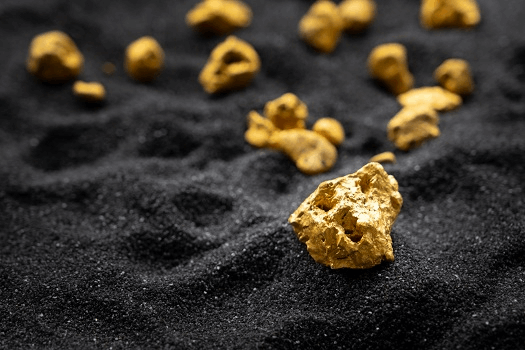Which Precious Metal Is Most Rare?
At a time when many investors are looking to diversify their portfolios, precious metals are more appealing than ever. Whether you’re on the hunt for a new investment opportunity or just curious about what’s happening in the world of precious metals, there’s something to be said for exploring the possibilities beyond what’s popular and well-known. This brings us to the topic of the rarest precious metal, which is largely considered to be osmium. If they’re already interested in collecting precious metals such as platinum bars, silver bullion, or gold coins, Scottsdale residents might be quite intrigued by the following facts about this extremely rare commodity.
An Extremely Dense Rare Find
Part of the platinum family of precious metals, osmium is a grayish-white metal. Unlike pure gold, it’s very hard, which makes it difficult to work with. It also tolerates high temperatures well, meaning it doesn’t melt easily. What’s more, in crystalline form, it has a shiny appearance that can be visually appealing. Twice as dense as lead, it’s also resistant to rust and corrosion, making it impressively durable.
Why It’s So Rare
What’s considered the world’s densest metal was discovered in 1803 by British chemist Smithson Tennant. A by-product of platinum mining, osmium doesn’t have any major industrial uses. It’s also toxic when produced and prone to oxidation. However, in 2014, scientists in Switzerland were able to turn the toxic oxide produced when osmium is created into a crystalline structure. The resulting precious metal made this way is non-toxic and safe to handle.
How Rare It Actually Is
According to some estimates, there are only about 48 tons of osmium remaining in the earth’s crust. By comparison, it’s estimated there are about 55,000 tons of gold still waiting to be mined. Osmium is also a rare precious metal because there are no mines specifically dedicated to its extraction, and, unlike gold and silver, it can’t be blended with other metals. Additionally, it takes approximately 10,000 tons of platinum ore to produce a single troy ounce of osmium.
The Emerging Crystalline Osmium Market
Because of its rarity, osmium is on the expensive side compared to commonly traded precious metals. However, there’s an emerging market for crystalline osmium. In fact, there’s an International Osmium Database that allows this precious metal to be traded among private buyers. The Osmium Institute is largely responsible for putting together the technology to allow this rare precious metal to be traded globally. It’s done through a digital certification process similar to what’s common with other digital assets. It’s worth noting crystalline osmium has, so far, proven to be a strong performer among investors.
Consistently High Demand
The demand for this rare precious metal remains high because it’s so difficult to extract and produce. Incidentally, some German-based jewelry manufacturers are already creating pieces made with this precious metal. There’s even a company making high-end headphones containing osmium.
Whether you’re looking for expert advice on rare precious metals or searching for the best place to buy gold in Scottsdale, make sure to work with trustworthy precious metal dealers who offer high-quality service and have years of experience. Call on the industry-leading professionals at First National Bullion when you’re ready to invest in precious metals, including gold, silver, platinum, and palladium. Give us a call today at (480) 546-5089.
The statements made in this blog are opinions, and past performance is not indicative of future returns. Precious metals, like all investments, carry risk. Precious metals and coins may appreciate, depreciate, or stay the same in cash value depending on a variety of factors. First National Bullion does not guarantee, and its website and employees make no representation, that any metals for sale will appreciate sufficiently to earn the customers a profit. The decision to buy, sell, or borrow precious metals and which precious metals to purchase, borrow, or sell are made at the customer’s sole discretion.


